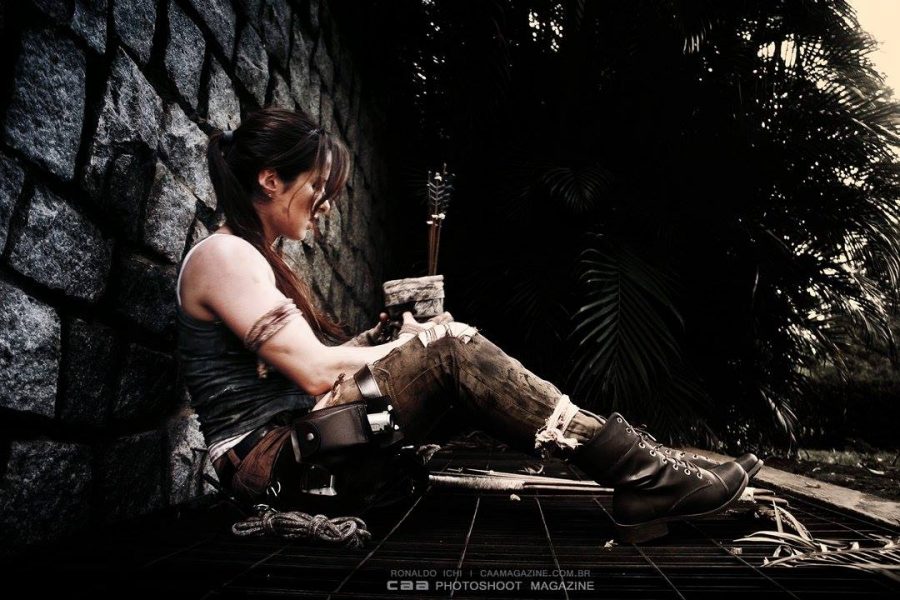“Tomb Raider” is an excellent advertisement for the video game on which it is based. Having only played the original 1996 “Tomb Raider” game on the PlayStation 1, my general knowledge of the brand is limited. However, my understanding is that the newest film adaptation of the series pulls deep inspiration from the recent PlayStation 4 reboot.
After seeing “Tomb Raider”, I can say that the movie’s connection to the video game medium is not subtle. Long, intense action sequences trap the female protagonist in dangerous situations, and while you will not quite envy her circumstances, you might feel left out. The film’s greatest success may be its effect of keeping viewers invested by making them wish they had a controller in their hand.
At the same time, “Tomb Raider” could not accomplish this effect without its female lead, Alicia Vikander, who plays Lara Croft. Vikander earned an Academy Award for best supporting actress in “The Danish Girl,” and gave a brilliant performance as an artificially intelligent humanoid robot in the quaint sci-fi film “Ex Machina.”
With “Tomb Raider”, Vikander undeniably proves that she can command an action franchise. Vikander gifts character, skill and drive to Lara Croft. “Tomb Raider” is full of unrealistic moments during which characters survive the impossible, but through it all, Lara Croft usually still feels like a real human being who is developing over time.
In this adaptation, the “Tomb Raider” story progresses from the grounded to the outrageous. Years after her father (Dominic West) disappears on a mysterious expedition, Lara Croft is living a carefree lifestyle in London as a bike courier. When her father’s business partner (Kristin Scott Thomas) reaches out, Lara has to choose between claiming her inheritance and giving away her father’s estate. In the process of accepting her inheritance, Lara obtains new information about her father’s disappearance and decides to search for more answers.
Story problems are the potential downfall of “Tomb Raider” for many viewers. The first and second act of “Tomb Raider” try to exist in the real world, but the third act, however, absolutely calls for suspension of disbelief. The differences between acts generate an imbalance of principles and inconsistency in tone.
Additionally, there are basically no original ideas in “Tomb Raider”. Parents who mysteriously disappear? Ambiguous mysticism? Uncharted islands? Secret organizations? Lost treasures? I have seen all of those tropes in “National Treasure,”“Pirates of the Caribbean,” “Indiana Jones,” “King Kong,” “Assassin’s Creed,” etc. Borrowing story elements is nothing new to filmmaking, but if you are going to do that, creative delivery of the exhausted ideas becomes essential.
For the most part, I don’t think “Tomb Raider” brings enough of a creative delivery to overcome its stale concepts. Animated sequences with voiceovers set up the mythology at the beginning, and throughout the film, Lara reads journal entries and plays tape and video recordings to provide more information to the audience. In an act of supreme handholding, the movie flashes back to those same images and audio at its climax to actively solve the mystery for the viewer.
The story’s pacing also feels unnatural. Norwegian director Roar Uthaug spends far too much time on some scenes, and then it’s almost as if he notices that the movie needs to progress and quickly rushes to the next sequence. I appreciated that a lot of time and attention is given to setting up the story in the beginning, but the overall progression lacks cohesion.
If a movie cannot overcome its overused ideas with good storytelling, then it is up to the characters to keep things interesting. While Vikander single-handedly keeps viewers emotionally invested, the supporting cast has very little to offer. Dominic West sometimes conveys believable emotion as Lara’s father, but otherwise, the supporting actors do little to make the characters more intriguing.
Moreover, the characters’ decisions and motives are rarely grounded in explanations. With almost no persuasion necessary, Lu Ren changes his mind about piloting his boat into the most dangerous part of the Pacific Ocean. Lara’s father has a psychotic obsession with the supernatural that is never explained. Mathias Vogel’s motivation is haphazardly constructed. Because the characters do not feel fully put together, they tend to alienate the audience.
That being said, “Tomb Raider” is not completely lacking in unique creative delivery. Some of the set pieces are truly amazing to watch even when they go on for too long, especially one involving an airplane and another with booby traps. Likewise, the way the director captures Lara Croft’s use of a bow and arrow is pretty sharp at times. From a filmmaking perspective, the island setting feels mostly neglected by dark lighting and a predominant focus on only one location, but one shot of Lara Croft on the beach in the daytime restores some justice to the movie’s photography.
Action sequences and setting moments alone cannot make a movie watchable, nor were these necessarily the reasons that I feel so compelled to give the latest “Tomb Raider” game a try. Instead, where the action meets Vikander’s performance is what draws me toward continuing to experience the franchise. This may sound contradictory because Vikander is obviously not present in the video game, but her interpretation of Lara Croft’s experiences makes me want to know more about the character and to follow her journey myself. One great performance and a few exciting action sequences might not be enough to satisfy every moviegoer, but I am at least willing to appreciate being introduced to the “Tomb Raider” herself.
Dillon MacInnis can be reached at [email protected].



















